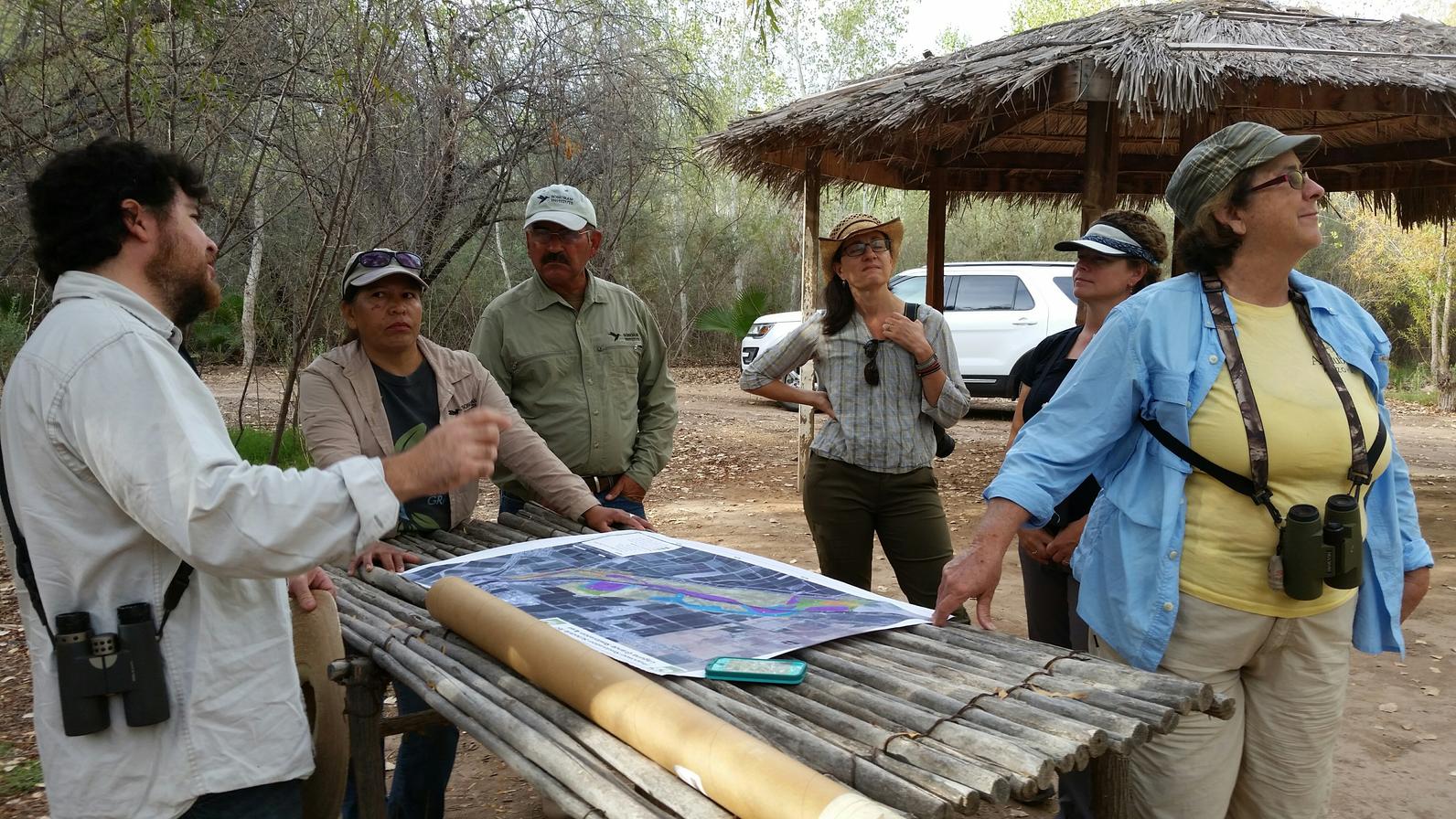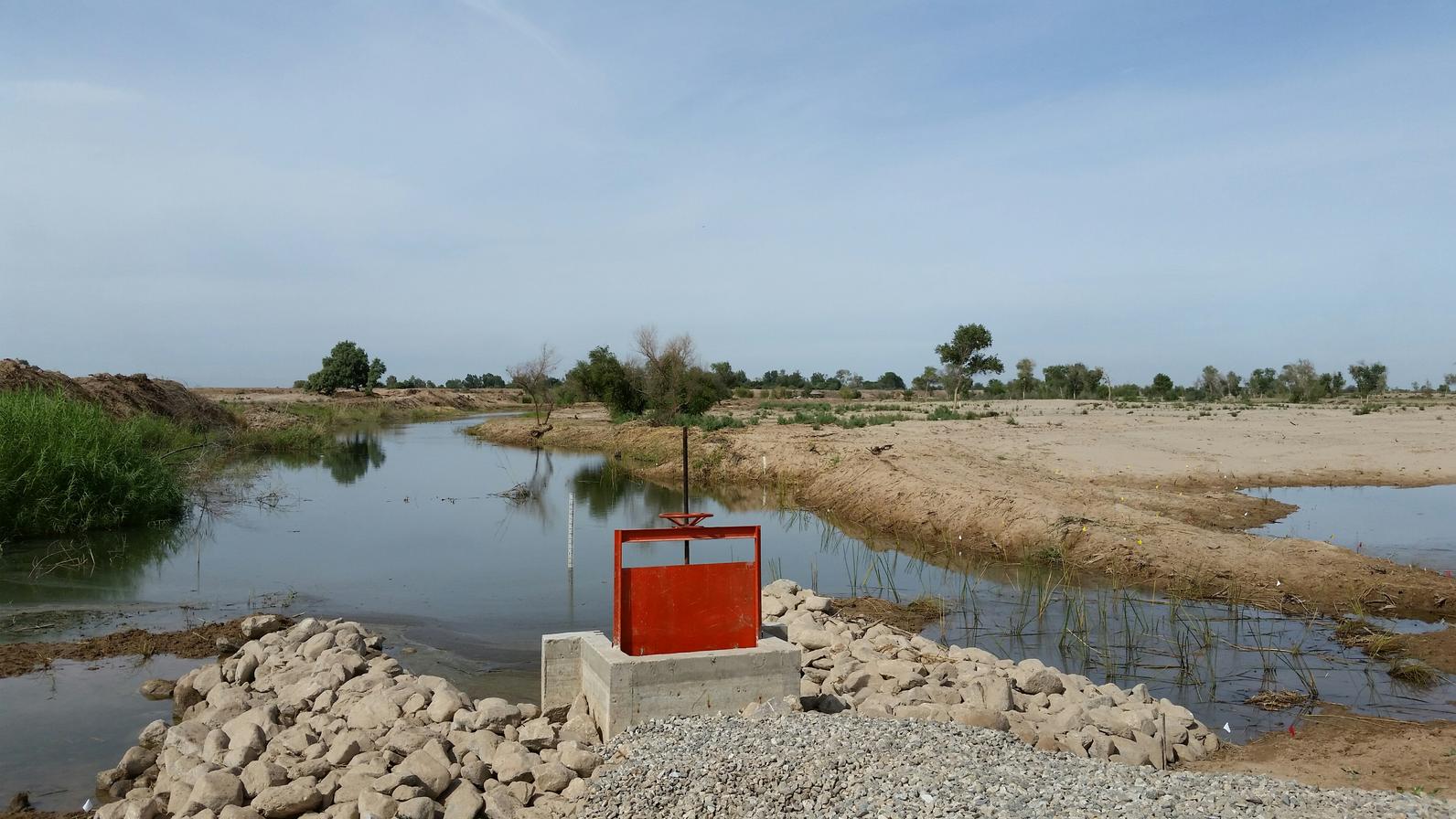
The first stop on my tour of bird habitat areas in the Colorado River Delta was the Cienega de Santa Clara. We drove through miles of vast silty delta, places completely devoid of any vegetation, to a large wetland. We then traveled by boat, traversing a large maze of reeds and patches of open water covering more than 30,000 acres. Birds everywhere.
The Colorado River Delta is located just south of Yuma Arizona and Mexicali, Mexico. While my work at Audubon focuses on the habitats at the Salton Sea, there are a lot of similarities between California’s largest lake and the Delta. Both are fed by Colorado River, or used to be, and both are systems very much manipulated by human development. Knowing what I know about how important the Salton Sea is to birds and the people that live there, I was curious to visit the Delta and see the habitats that have been recreated, either accidentally or on purpose. I wanted to see the small patches of a delta habitat that still give wildlife a home, in an area that once covered almost 2 million acres as the river swayed back and forth across the large plain. Long ago, the meandering of the Delta sometimes brought water north to fill the Salton Sink, forming what is still the Salton Sea.
Whether manmade or natural, what is left in the Colorado River Delta is what we have to work with, restore, and protect. And I was happy to see just that happening with our colleagues in Mexico at ProNatura and the Sonoran Institute.

If I hadn’t asked, I would have thought that the wetland of Cienega de Santa Clara had always been there. The birds seemed to think so. Judging by the species alone, I could have been at the Salton Sea – the same cast of characters were evident. White Pelicans formed lines to school fish around their feet. Forster’s Terns dove gracefully ahead of us. Double-crested Cormorants perched on emerged rocks and branches, and dowitchers zipped back and forth to nearby mudflats. All this was created in a similar way to what keeps the Salton Sea going today. In 1976, a channel was built into the Delta to deposit agricultural runoff, and it soon formed its own habitat. Looking at it, you would never know that it started this way. It is now part of a Biosphere Reserve and is studied and protected by ProNatura. One look outside this Cienega and you can see the original delta, lying dry, waiting for a flood.

We next visited a variety of restoration projects along sections of the Colorado River that now have some water delivery and benefited from the great Pulse Flow of 2014. ProNatura and Sonoran Joint Venture have identified key sites along old oxbows and former wetlands to return them to a little semblance of their former glory. With occasional, dense stands of riparian forest, with warblers flitting about and trails of beaver evident along the banks, these small pockets represent a living museum of what once covered vast areas.
Last, we visited a site that was stark by contrast. In 2014, an agreement was reached between the United States and Mexico to release a spring pulse flow of water from a dam at the US/Mexico border down into the Delta for the first time in about 50 years, rehydrating sections of the Colorado River where whole communities, and certainly the children in those communities, never knew the dry river bed could actually have a flowing river in it. The pulse flow brought those communities to life, celebrating water, bringing their families, their dogs, their horses, to play in the water. The communities knew the water was coming so they were prepared, hosting trash pick-up and standing watch for the first trickle of water to emerge.

When I saw this area, the water was gone and now what remains is again a dry river bed with a border fence obstructing the view in one direction. People haven’t forgotten, however. Riverine habitats have surged back to life and communities are reconnecting to their river. Officials in one town we visited are planning to build a river park and there is hope of negotiating another pulse flow to hydrate the soils, prepare areas for restoration, and bring water to communities. The river is still there – it just needs some water in it.
Andrea Jones is Audubon California's director of bird conservation.
By Andrea Jones
A New Colony of Caspian Tern Decoys on Aramburu Island
Richardson Bay Audubon Center is attacting breeding pairs of Caspian Terns with these newly painted tern decoys—a strategy successfully used by previous tern relocation efforts.




